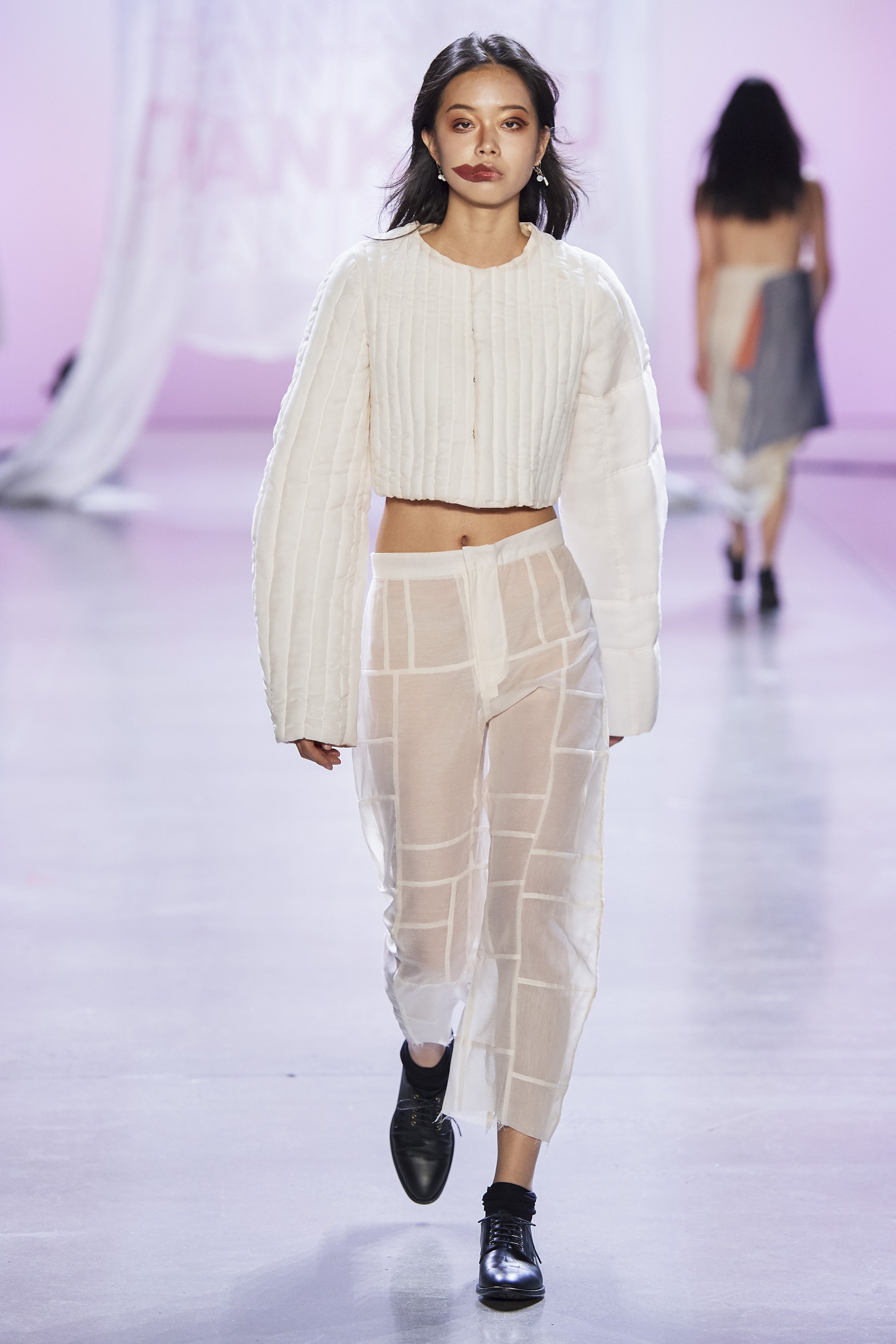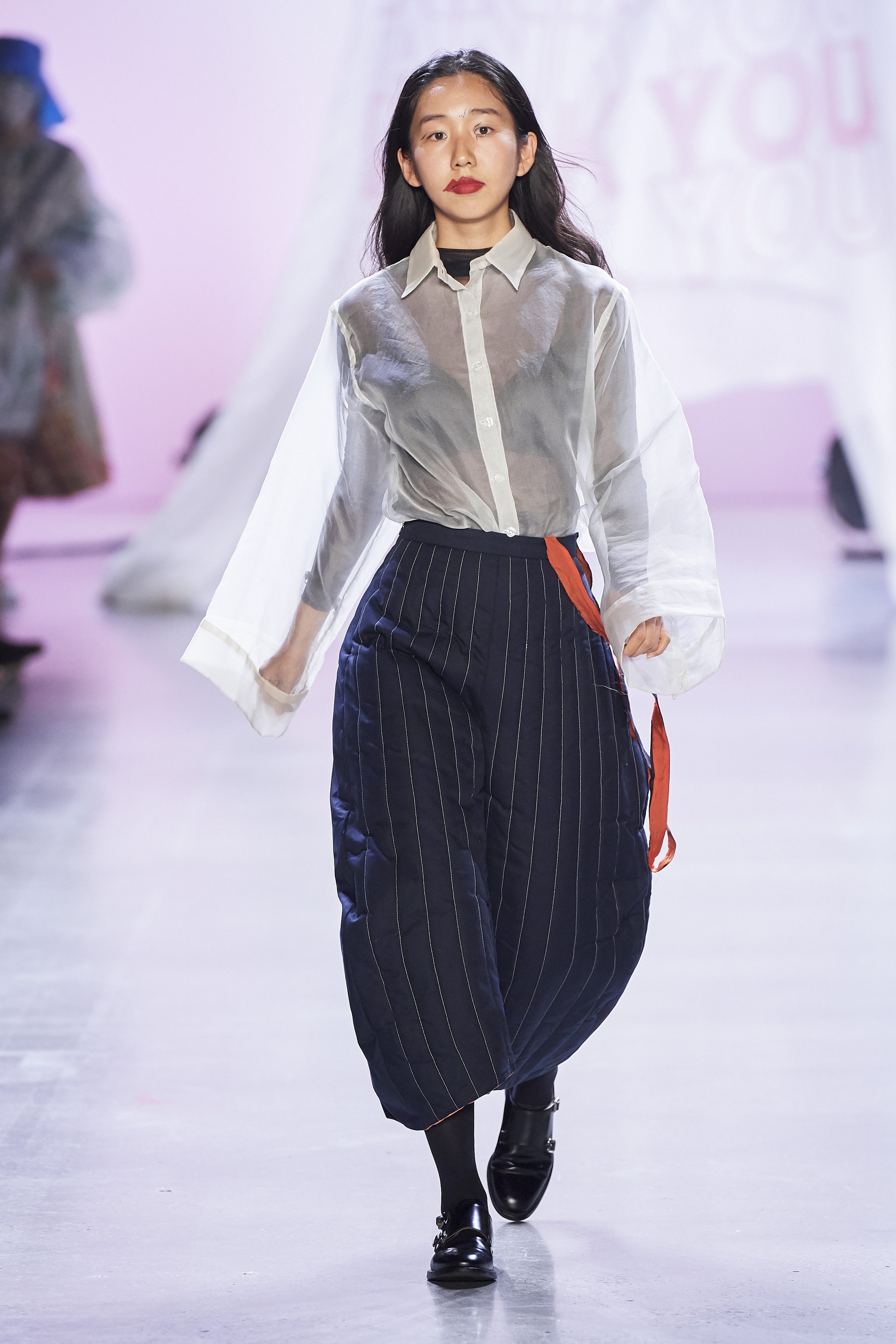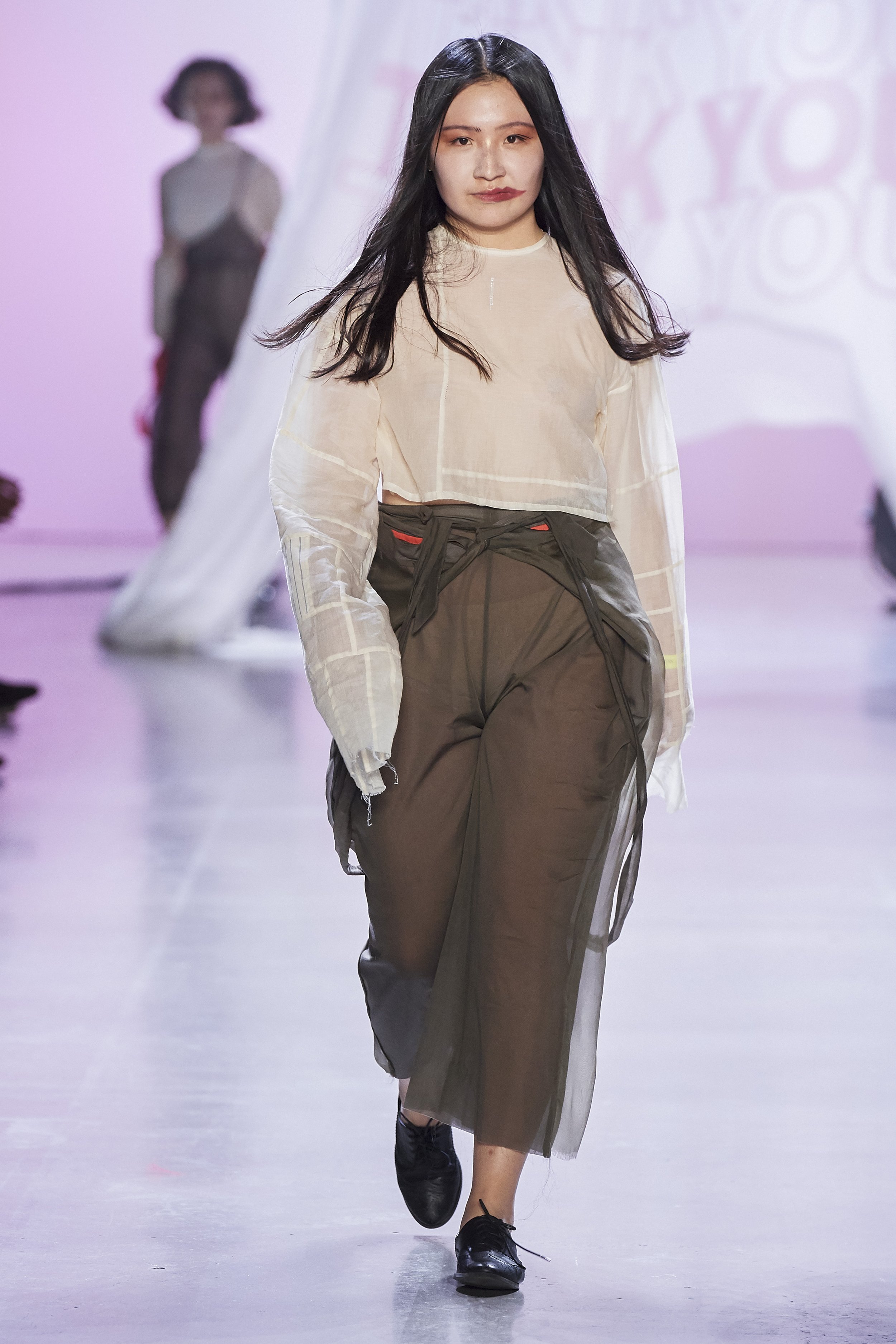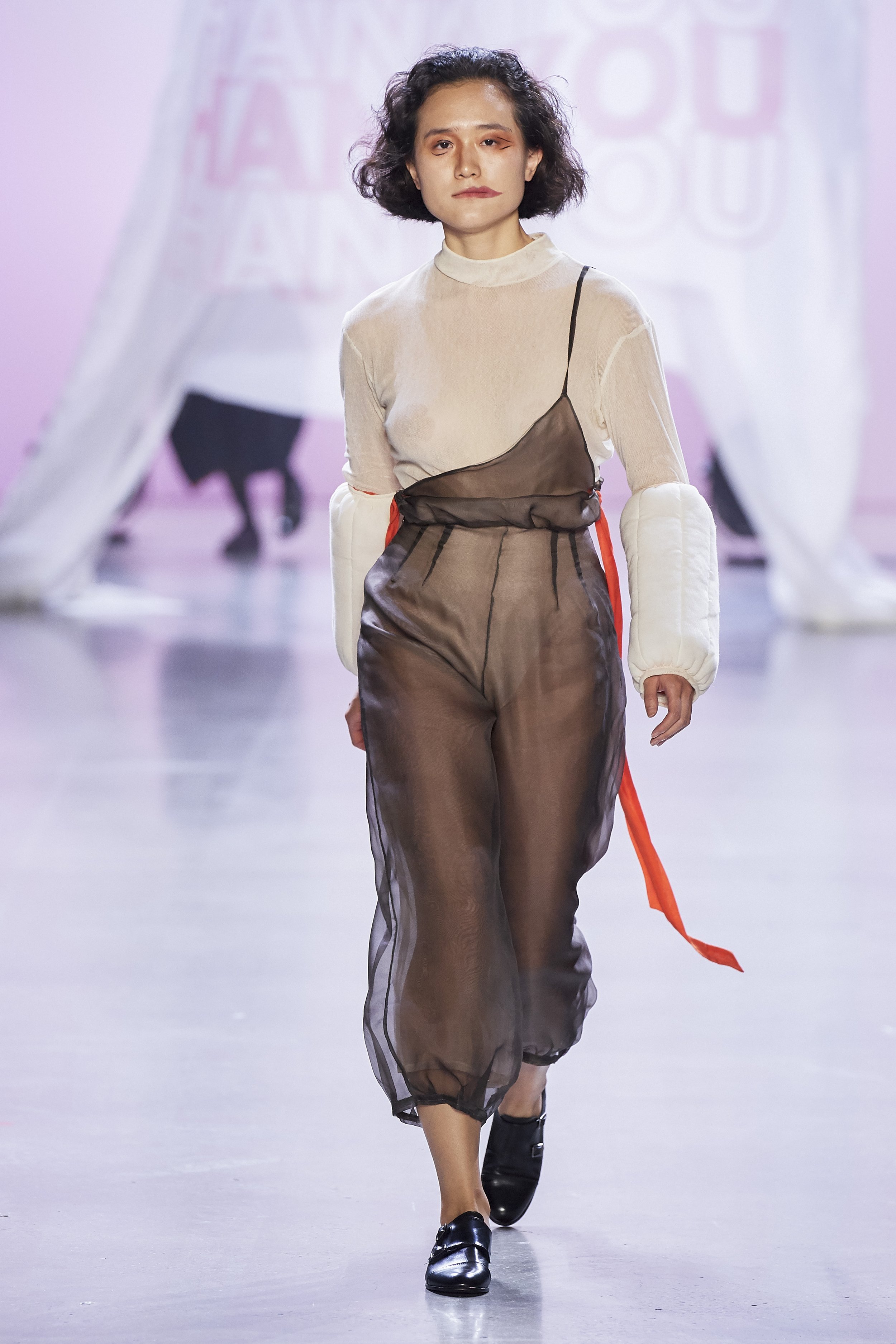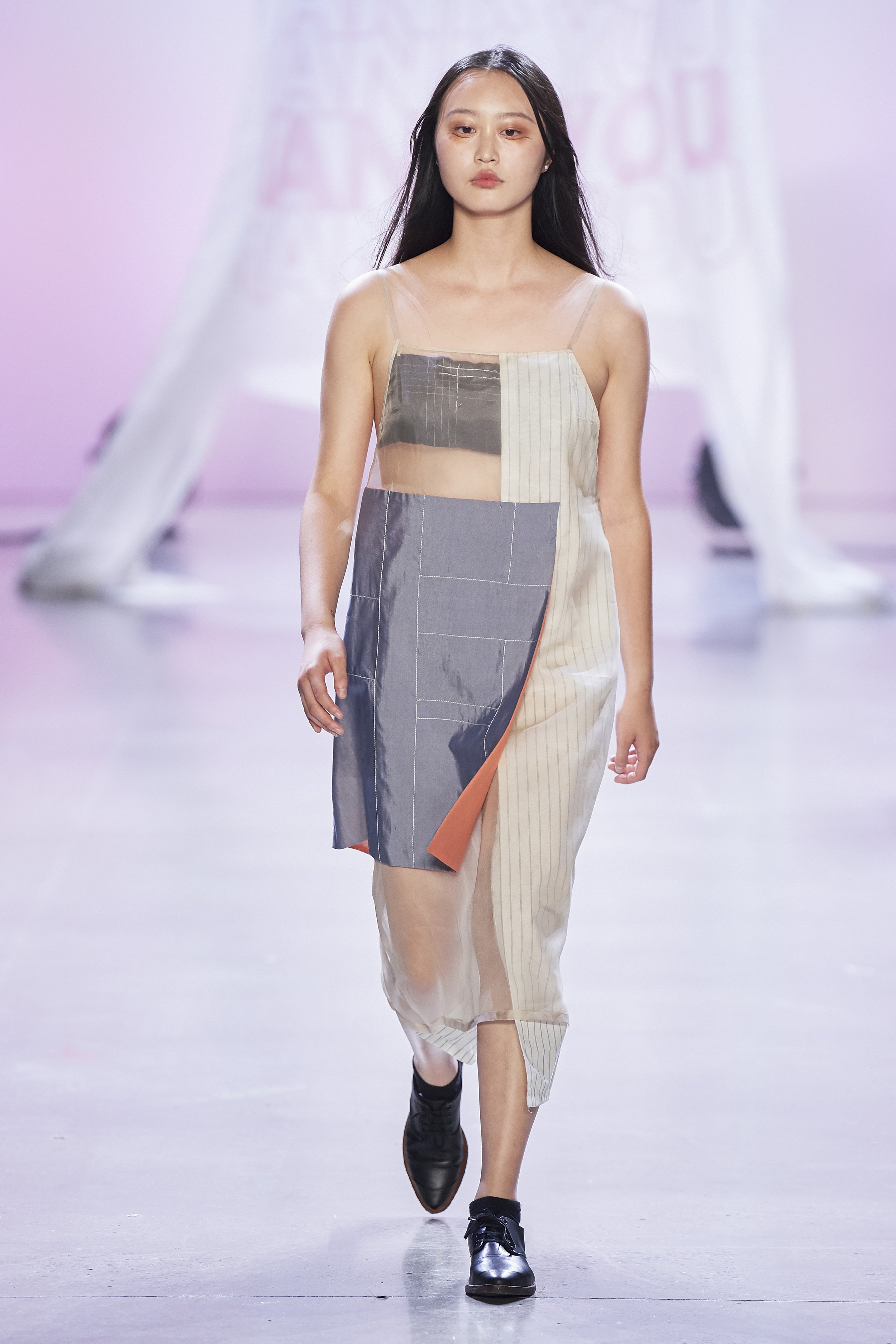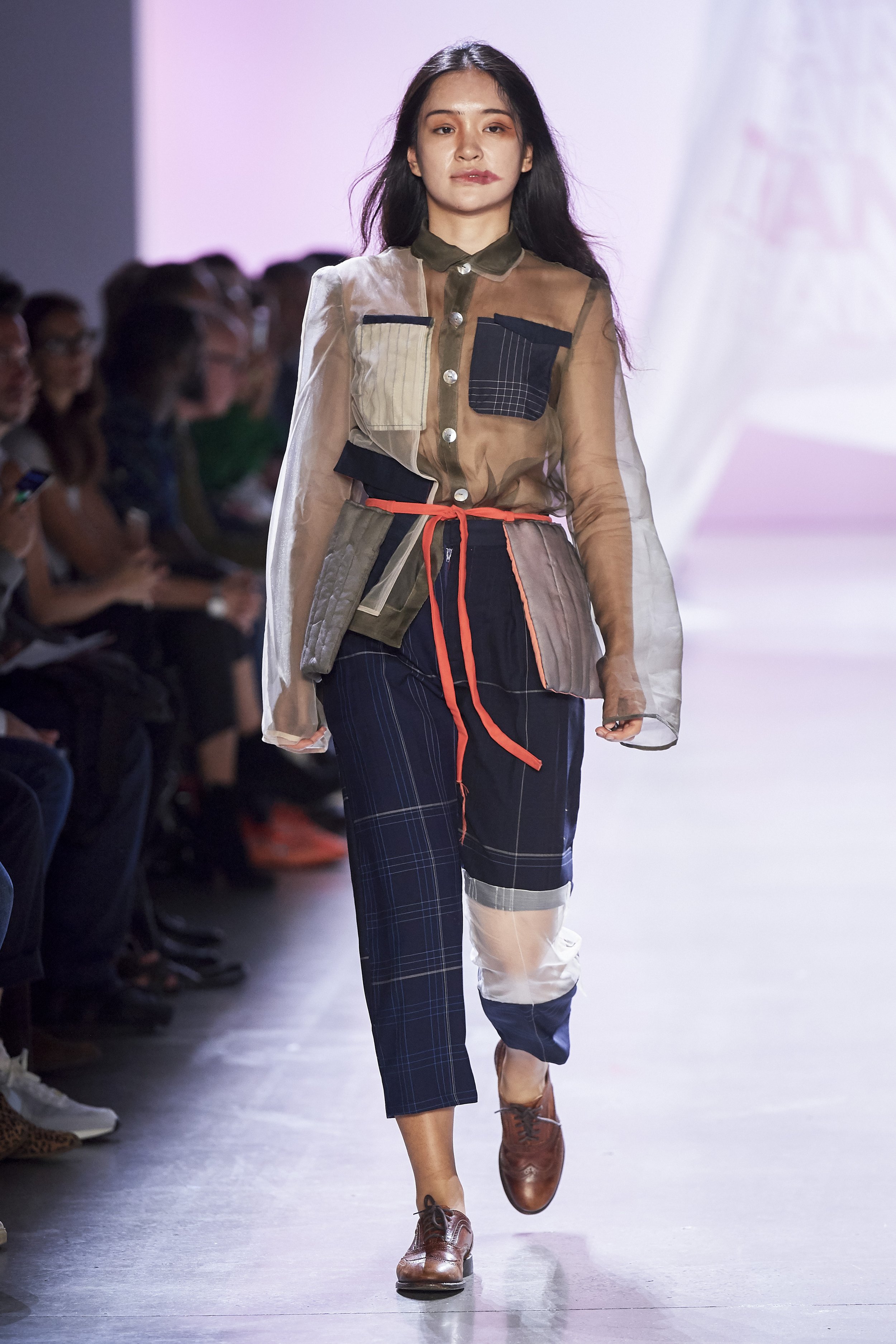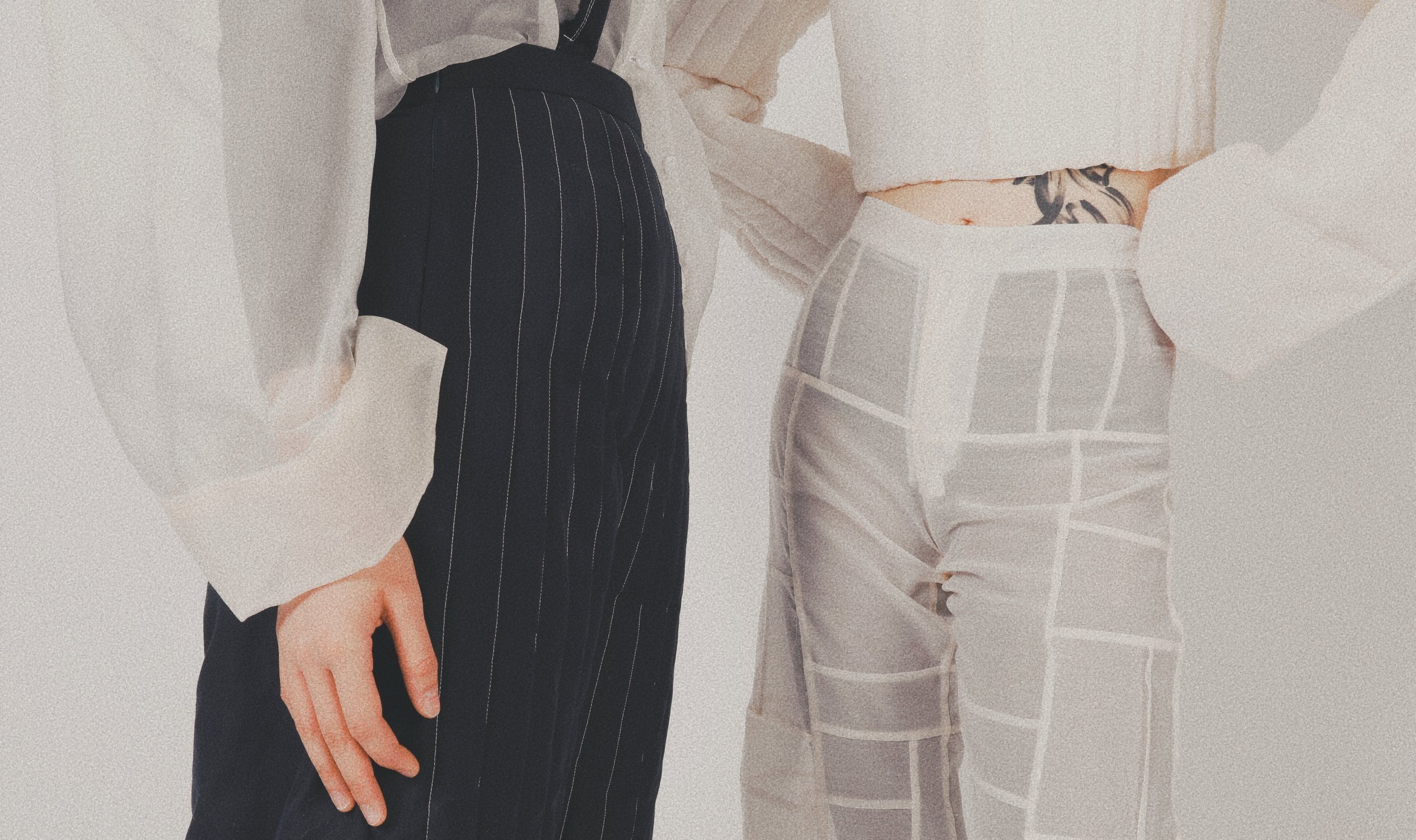
recollections.
Senior Thesis, Apparel Design @RISD
Memories hold an important place inside me. They are a placeholder for a part of me that is no longer alive. They are not just imitations of the past—they are my only reference to the person I once was, and that is why I hold onto them so dearly.
context;
For my graduating thesis in Apparel Design at Rhode Island School of Design, I wanted to challenge myself to take an abstract concept and distill it into concrete pieces of wearable art.
I chose memory as my concept. It was important to me that I could communicate the generally nostalgic, vague feeling of memories and the fleeting moments of clarity they sometimes harbored.
I started off by brainstorming about my concept. I kept a notebook and filled it with all thesis-related thoughts over a few weeks.
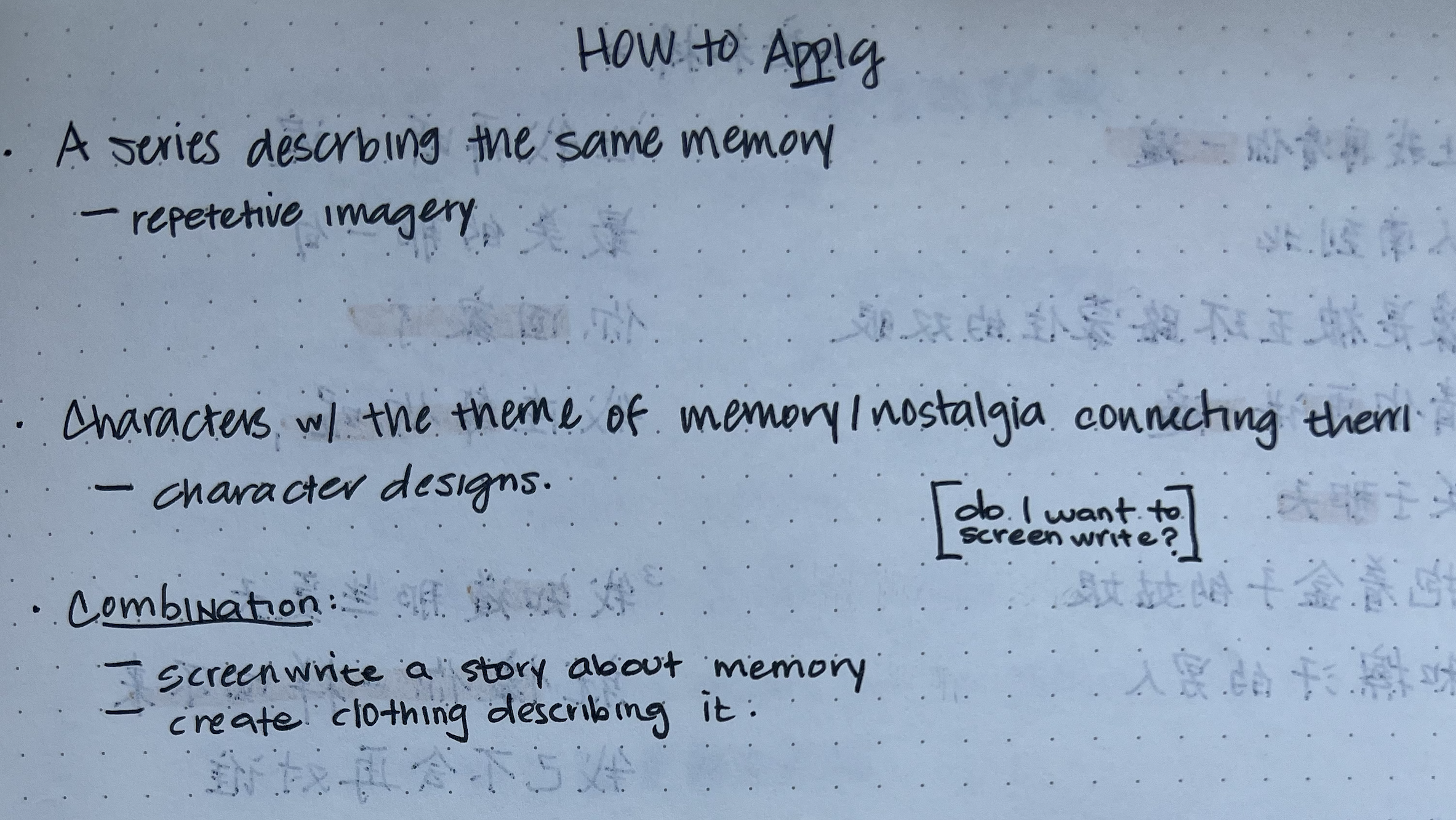
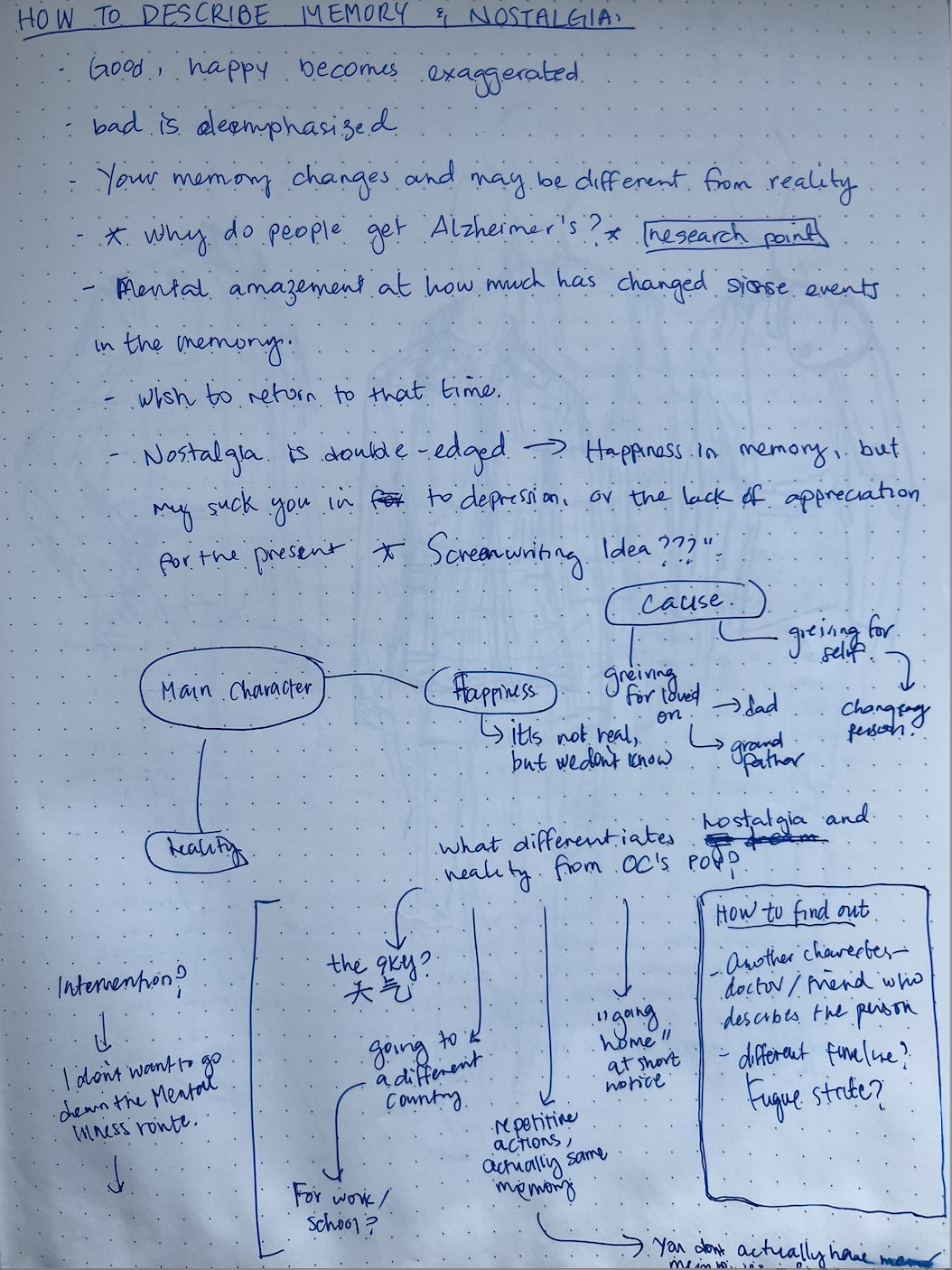
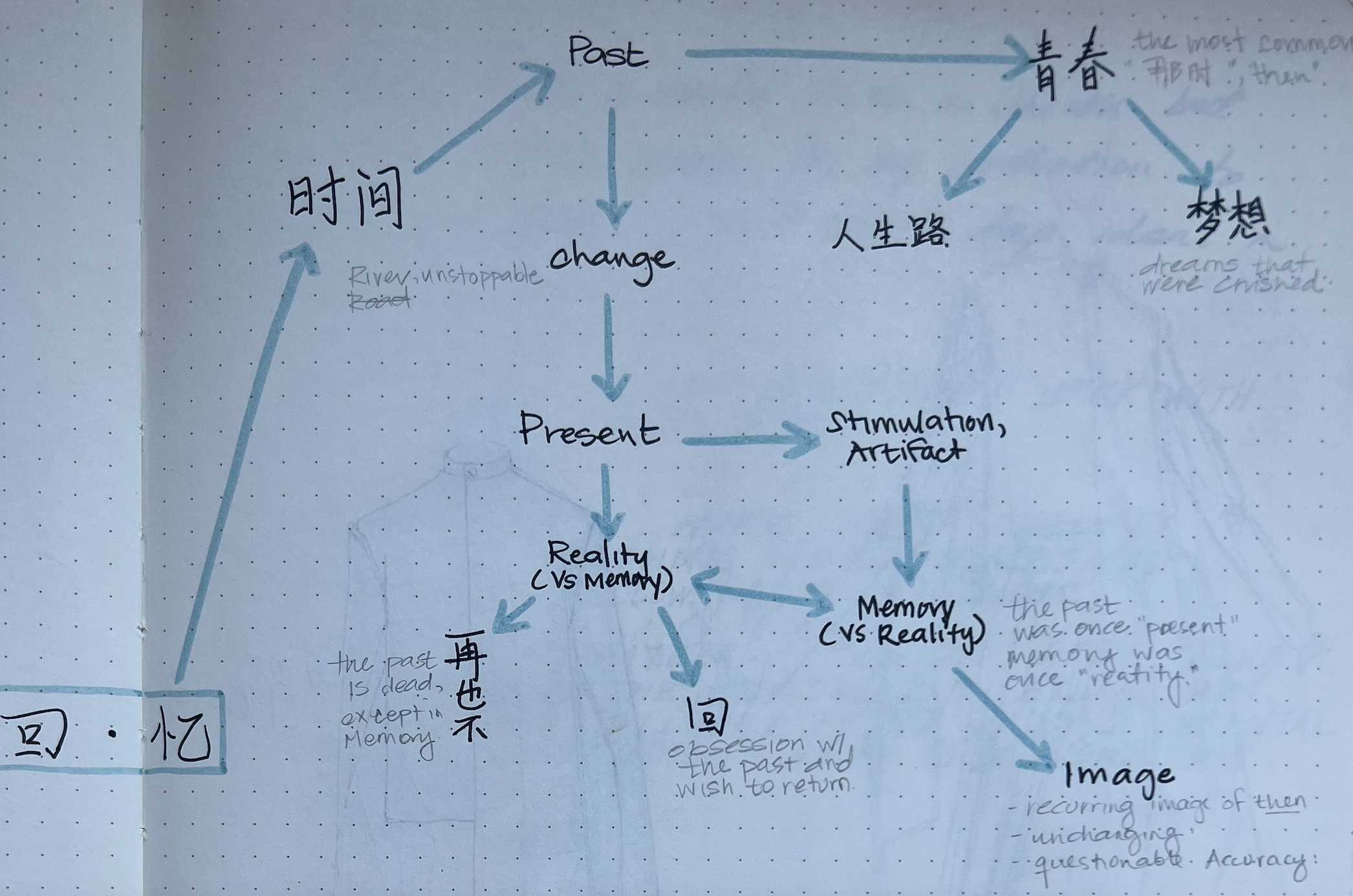
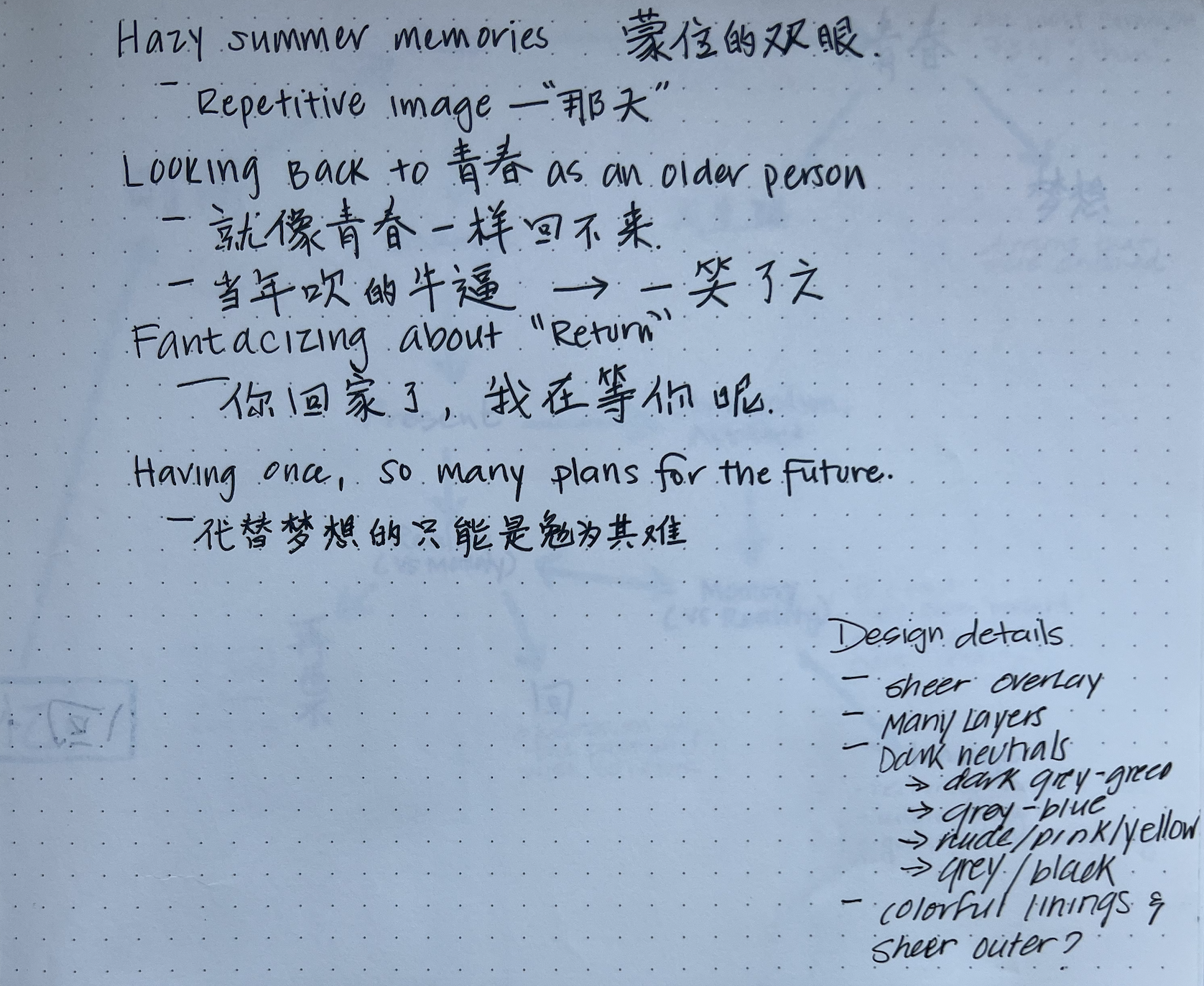
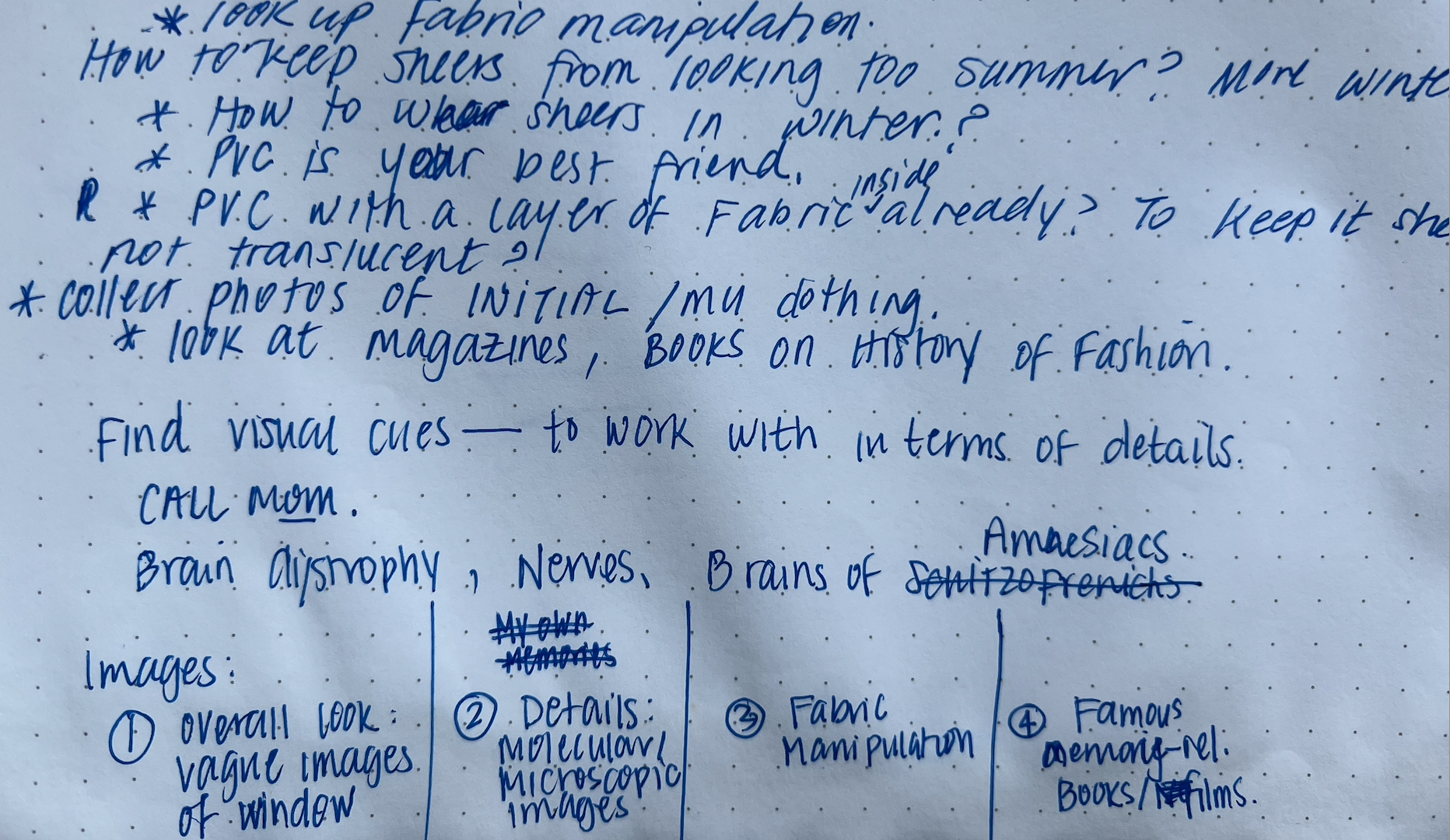
explorations and obstacles;
To create physical garments that evoked the concept of “memory”, I needed to identify imagery that I could leverage as visual stimuli to convey that abstract concept.
I took my brainstorming and organized my thoughts. I identified 4 avenues to explore: personal memories, conveying nostalgia through narrative, the biology of memory, and memory as an object.
My goal was to create a collection of garments that were evoked a sense of memory and nostalgia and transcended individual and cultural barriers, and resonated with any audience. I carefully considered the strengths and drawbacks of each of the 4 avenues:
-

personal memories of childhood clothing
Recreate garments inspired by my own childhood outfits. The sense of adult-sized childrens-wear would evoke a strangeness, challenging the viewer to think to their own childhoods.
Pros: Nostalgic, resonates with anyone on an individual level
Cons: Concepts of childhood and nostalgia overshadows “memory”; didn’t convey my concept clearly
-

nostalgic narrative
Leverage universal emotions toward the past, youth, etc. as memorialized in song, poetry, or film in narrative form.
Pros: Resonates with a wide audience
Cons: Narrative nuances and depth can’t be articulated clearly enough through a 6-piece garment collection, which is primarily a visual medium. Would require significant explanation to convey, but I wanted to clothing to speak for itself.
-

biology of memory
Explore the biological side of memory creation, recall, and consolidation. Use microscopic imagery of neurons as visual design cue.
Pros: Microscopic imagery provides an avant-garde visual direction that can be interesting to use as design inspiration.
Cons: May read too heavily scientific; may not convey the emotional and nostalgic side of memory, which is and important part of my concept goals.
-

memory as an object
Consider memory as an object, what are its universal characteristics? Layers, transparency, reconstruction… Use these characteristics to translate into a garment.
Pros: Easily translated to garment design; more straight-forward to convey to the audience.
Cons: Final designs are not based on clear imagery; concept is open-ended and can be interpreted differently between individuals.
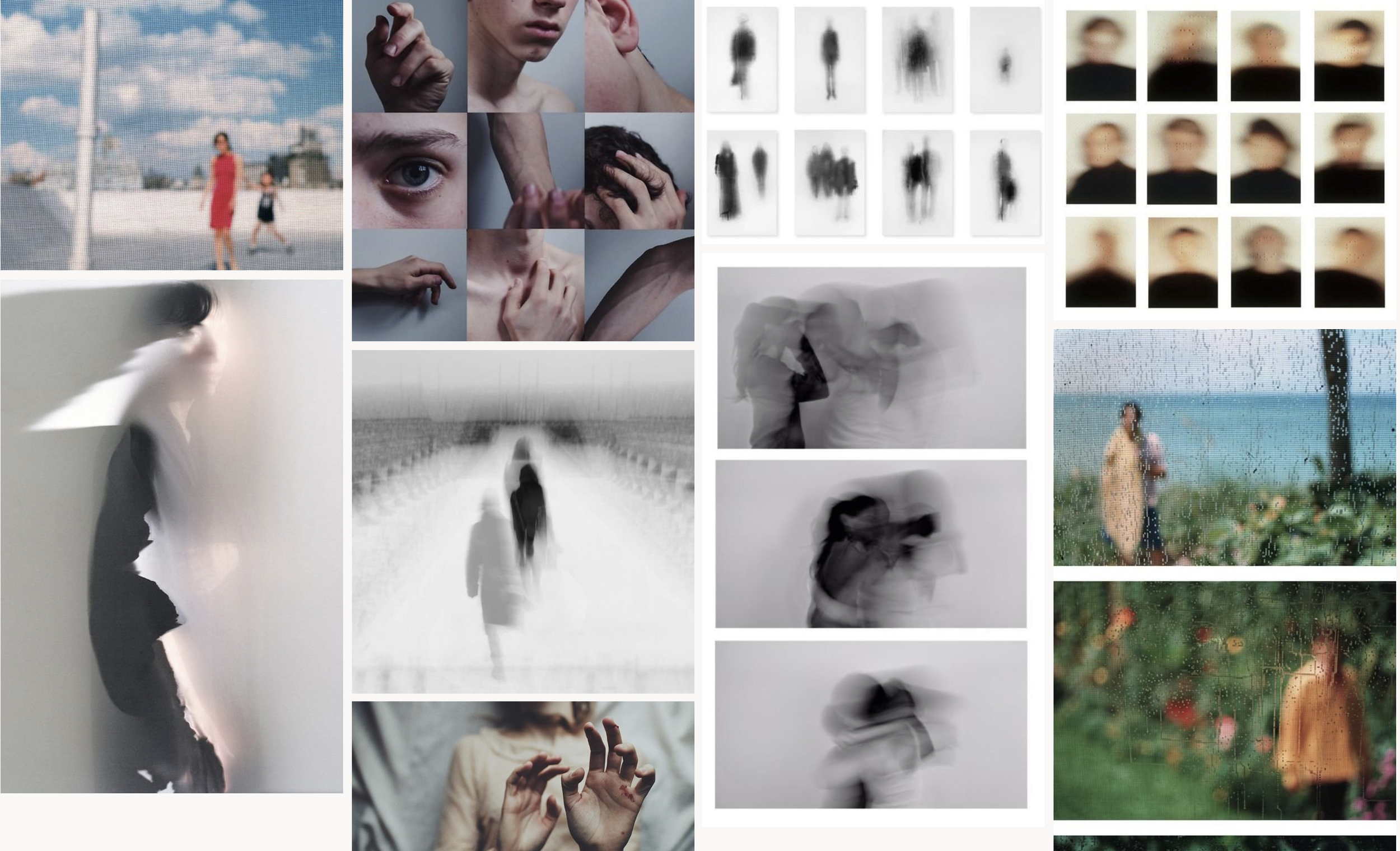
taking into consideration my medium and the story I wanted to tell, I chose to work around memory as an object as my concept
I would incorporate research on peoples’ impressions of memory, as well as on the science of memories, to further flesh out my concept.
research;
I undertook research to answer two questions:
What are the universally recognized characteristics of memory, which resonate with people across generations and cultures?
How could those characteristics be translated into clothing?
primary research - how do we perceive “memory”?
Using Google Forms, I created a survey to tease out respondents’ impressions of memory. It included questions like:
What are the first 3 words that come to mind when I ask, "what does a memory look like"? [open response]
Which of the following characteristics resonate most strongly with "memory” as a general concept? [select all that apply]
To the left, you will see a word cloud showing some of the most commonly occurring words in the responses. From that, I concluded that “foggy”, “reconstructed”, “layered”, “distorted”, and “comfort” imagery with “random details” would resonate well with most viewers.
secondary research - what is the biology of what we perceive?
Have you noticed that when you try to recollect an event, you cannot recall it in its entirety, but certain moments replay inside your head each time you try to remember? If someone else mentions a detail you had not remembered, you might recall it—but on your own, the same moments of the event are all you can remember.
There is a scientific explanation to this. When you experience something, your senses trigger an electric currents through certain neurological pathways. Neurological pathways have natural resistance, but the more times currents pass through a certain pathway, the less resistance it has. In other words, without other outside influence, electric currents tend to travel down the pathways it has traveled the most. These pathways also change slightly each time a current passes through.
We remember things when an environmental influence triggers the same neurological pathway as in a certain experience. Triggers may be a certain image, piece of music, or something much more abstract, like a logical thought process or your own stream of consciousness. Afterward, each time we recall a certain memory, it triggers the same pathways, which have been travelled before and have less resistance. This is why we tend to remember the same moments over and over again. This also means that there are moments in life we live through, but have disappeared in the depths of our brains because no external trigger ever brought it back up. Over time, memories become more difficult to re-trigger, and if too much time passes in between, the memory is buried and lost. This is why we tend to have fewer memories of longer ago, yet the ones we do have we have recalled many times before. The more times we recall a memory, the more distorted it becomes. This is because each electric current that passes through slightly alters the pathway, as mentioned above. Ironically, many of our most cherished memories, which we may recall the most often, tend to be the most distorted from reality.
“. . . we tend to remember the same moments over and over again. This also means that there are moments in life we live through, but have disappeared in the depths of our brains because no external trigger ever brought it back up. Over time, memories become more difficult to re-trigger, and if too much time passes in between, the memory is buried and lost.”
bringing memory into the collection
transparency; Memories become indistinct over time, almost transparent, so that your recollections show multiple layers at once. In my collection, I’m using many layers of transparent fabrics within one garment. Though multilayered, the garment is one and the layers cannot be separated.
muted palette with pops of color and detail; A common description of memories is that they are like silent film reels with very low saturation. But sometimes, there are moments within your memory that is somehow clearer, louder, and more distinct than others. I’m bringing these moments into my collection through small details in bright orangey hues.
quilting; Nostalgia can be comforting. We cling onto them as one might a soft-worn blanket on a cold night. I use quilting represent the comfort and warmth that memories bring.
patchwork, deconstruction, and reconstruction; As much as we want to believe memories are true fragments of the past, neurologically, they are often a patchwork made by our unconsciousness. They are constructed from pieces of bias, pieces of perspective, discourse, and narrative. They may include pieces that don’t belong, perfectly blended into our indistinct, multilayered memory. They may leave out pieces that we unconsciously discard. They are not whole, but fragmented and complicated. To represent this, I’ve created pieces constructed in patchwork patterns.
design sketches & experimentations
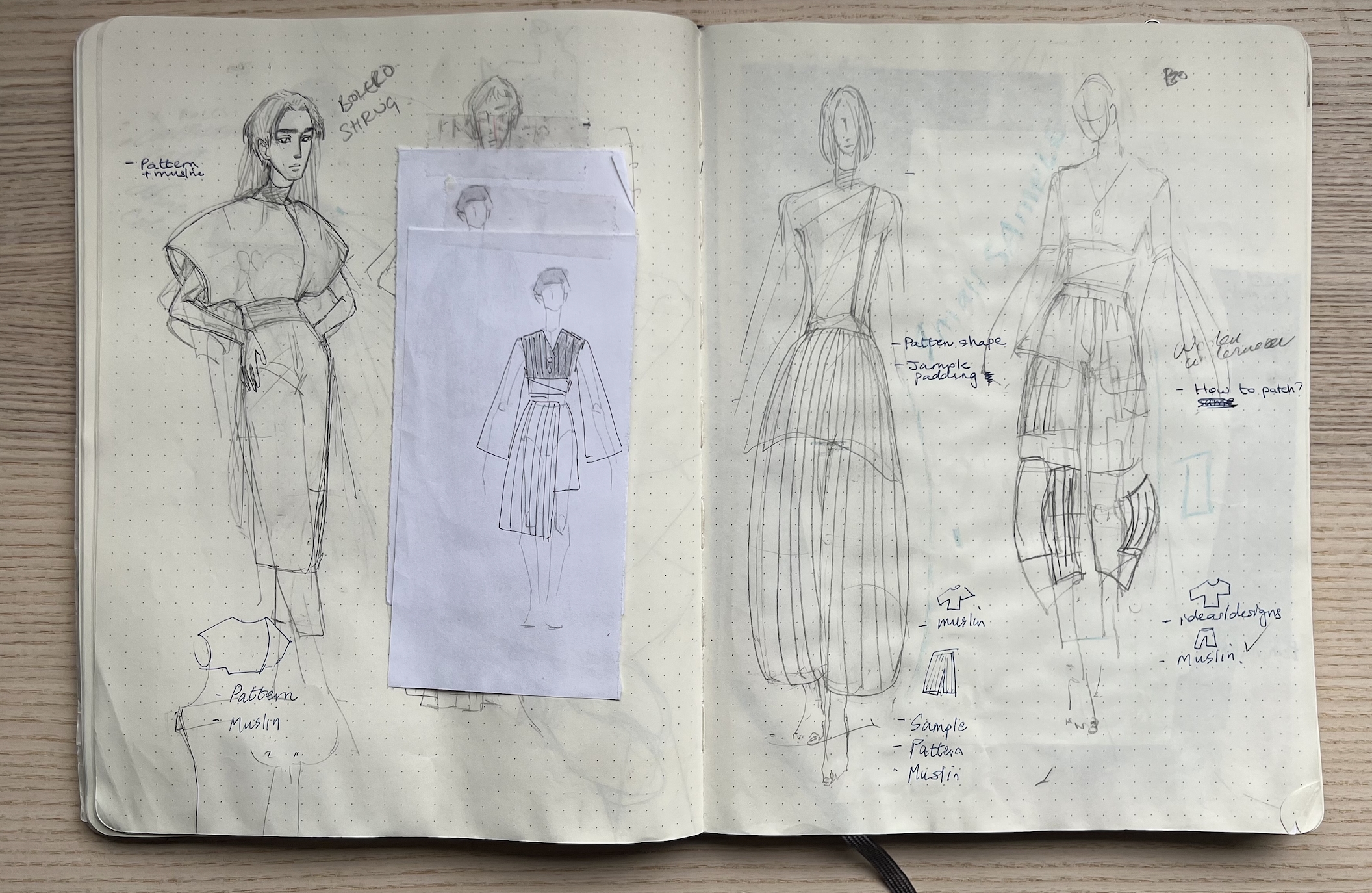
bolero, quilted pants, patchwork pants loose sketches
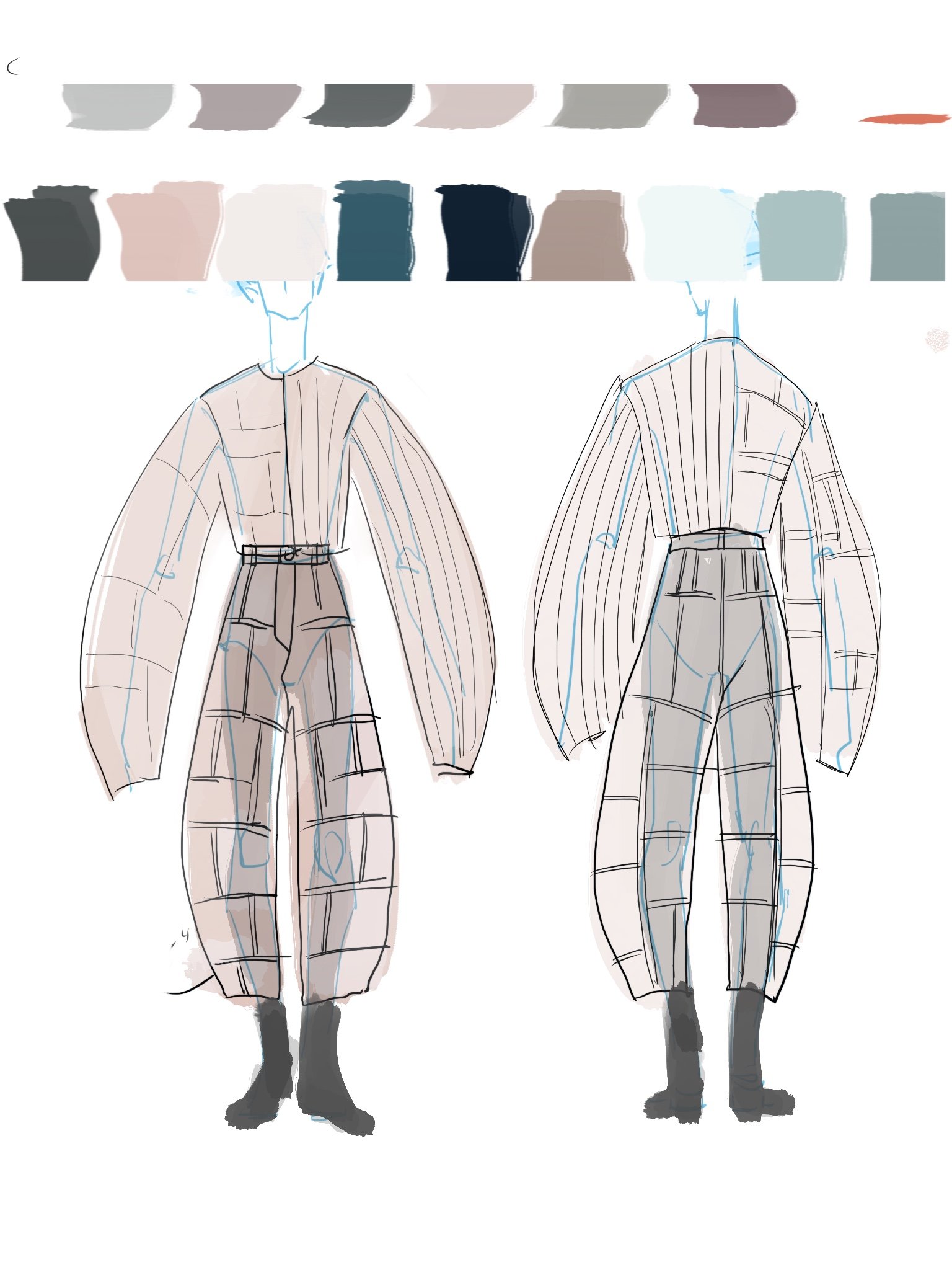
transparent patchwork pants with quilted jacket "小棉袄"

padded pants - explorations on color and stitching
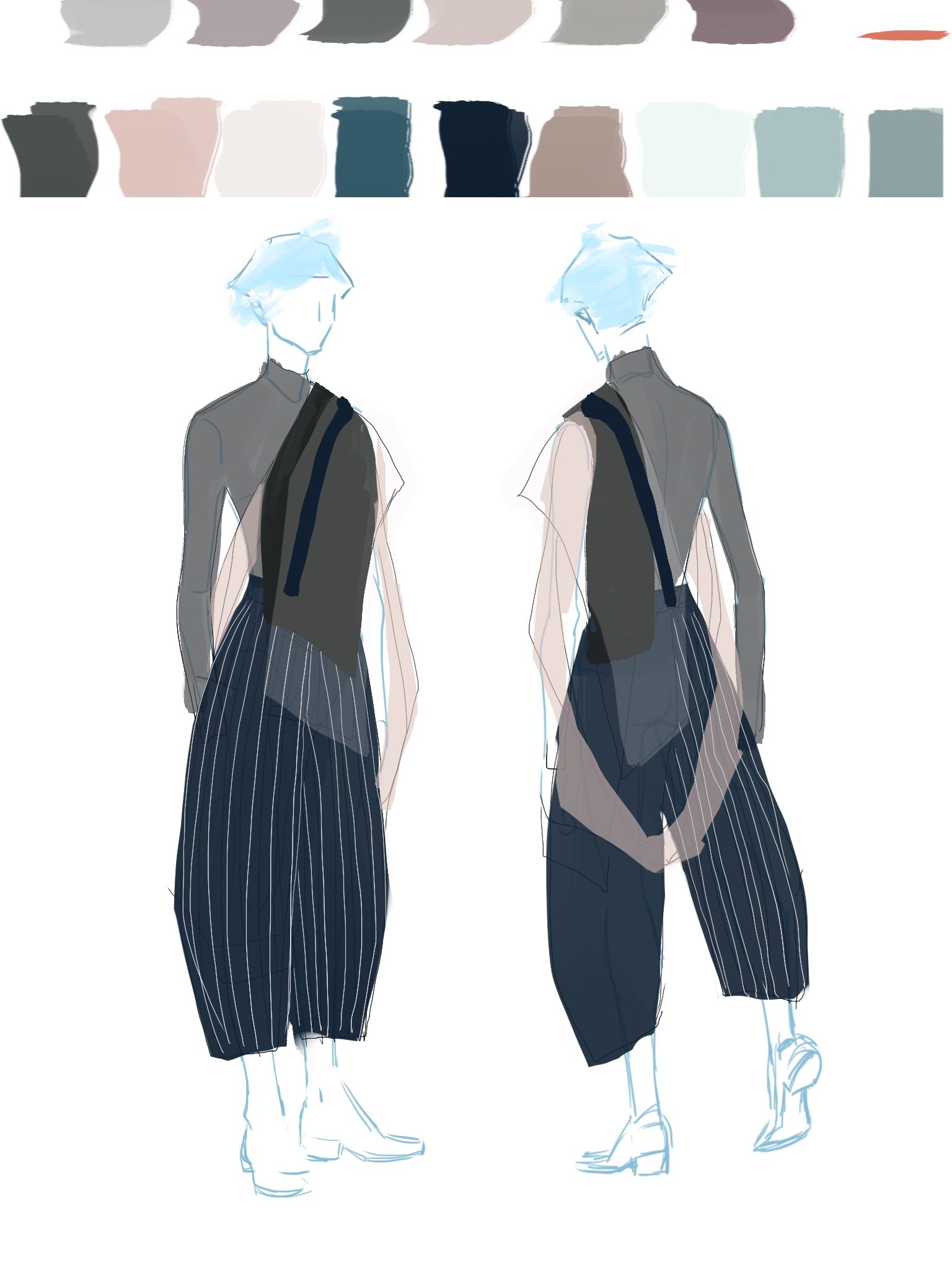
quilted pants with layered organza top
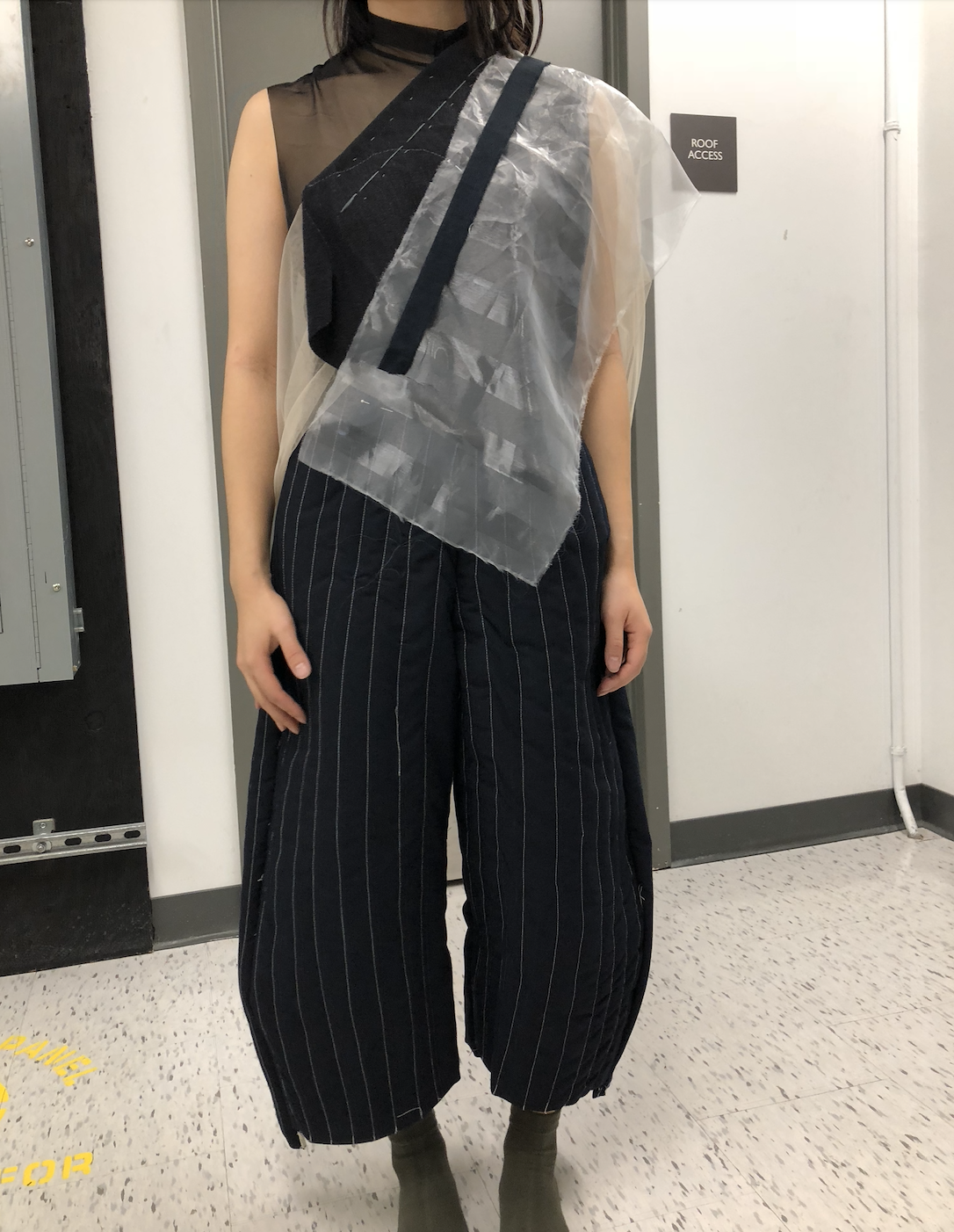
quilted pants, layered top experimentation/muslins
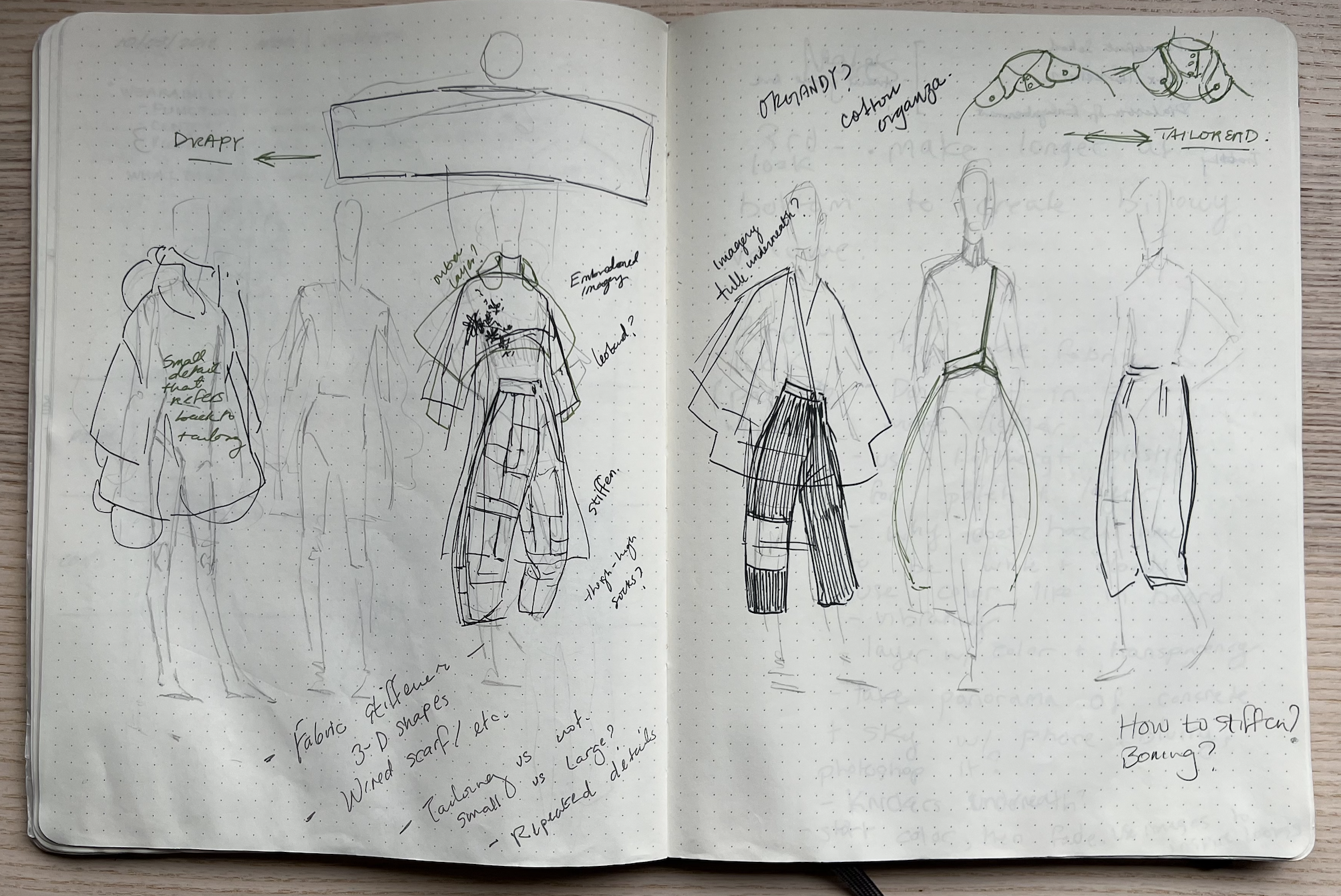
patchwork pants, cut-out pants, loose sketches
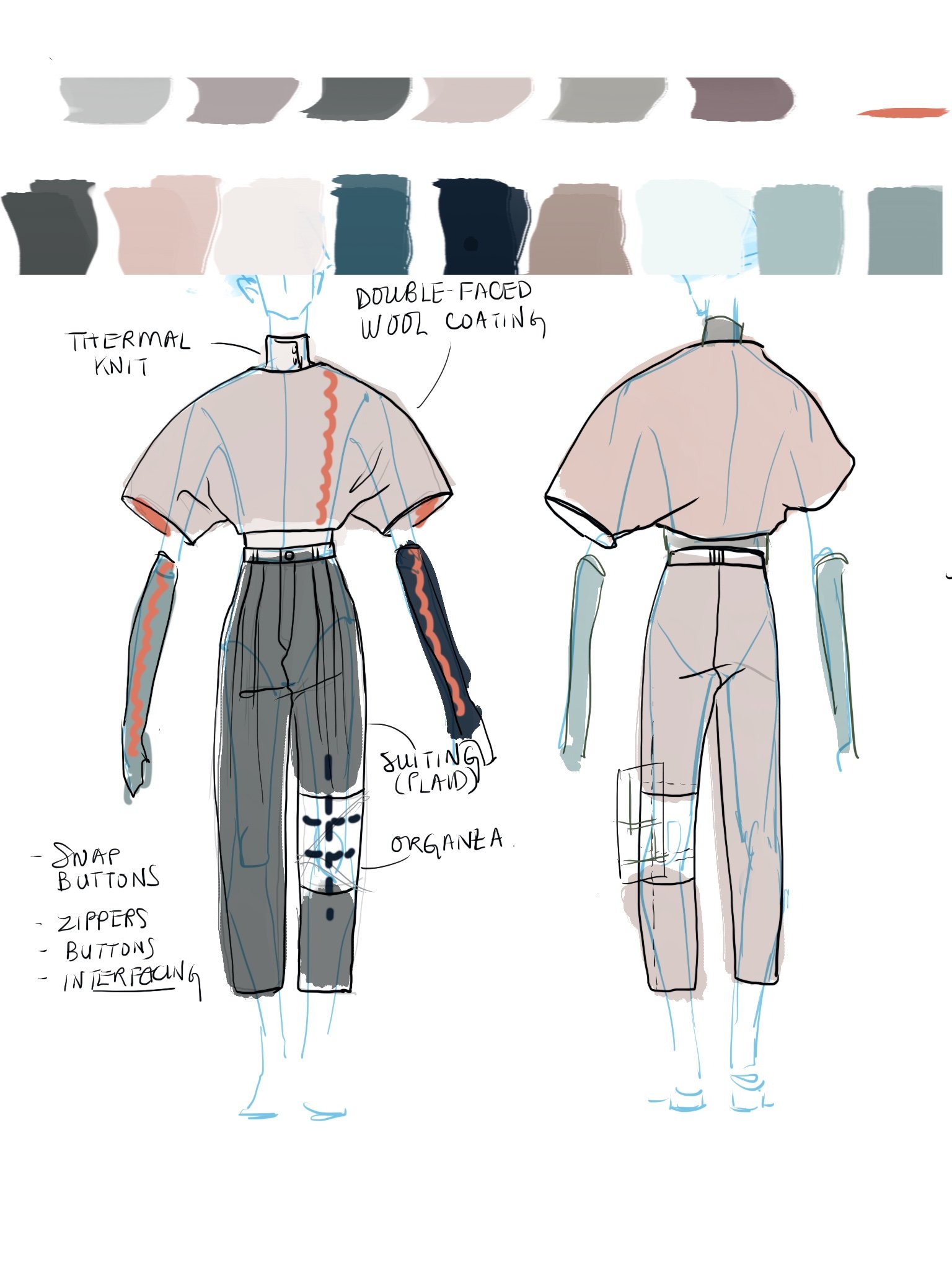
structured bolero with pops of detail and cut-out pant
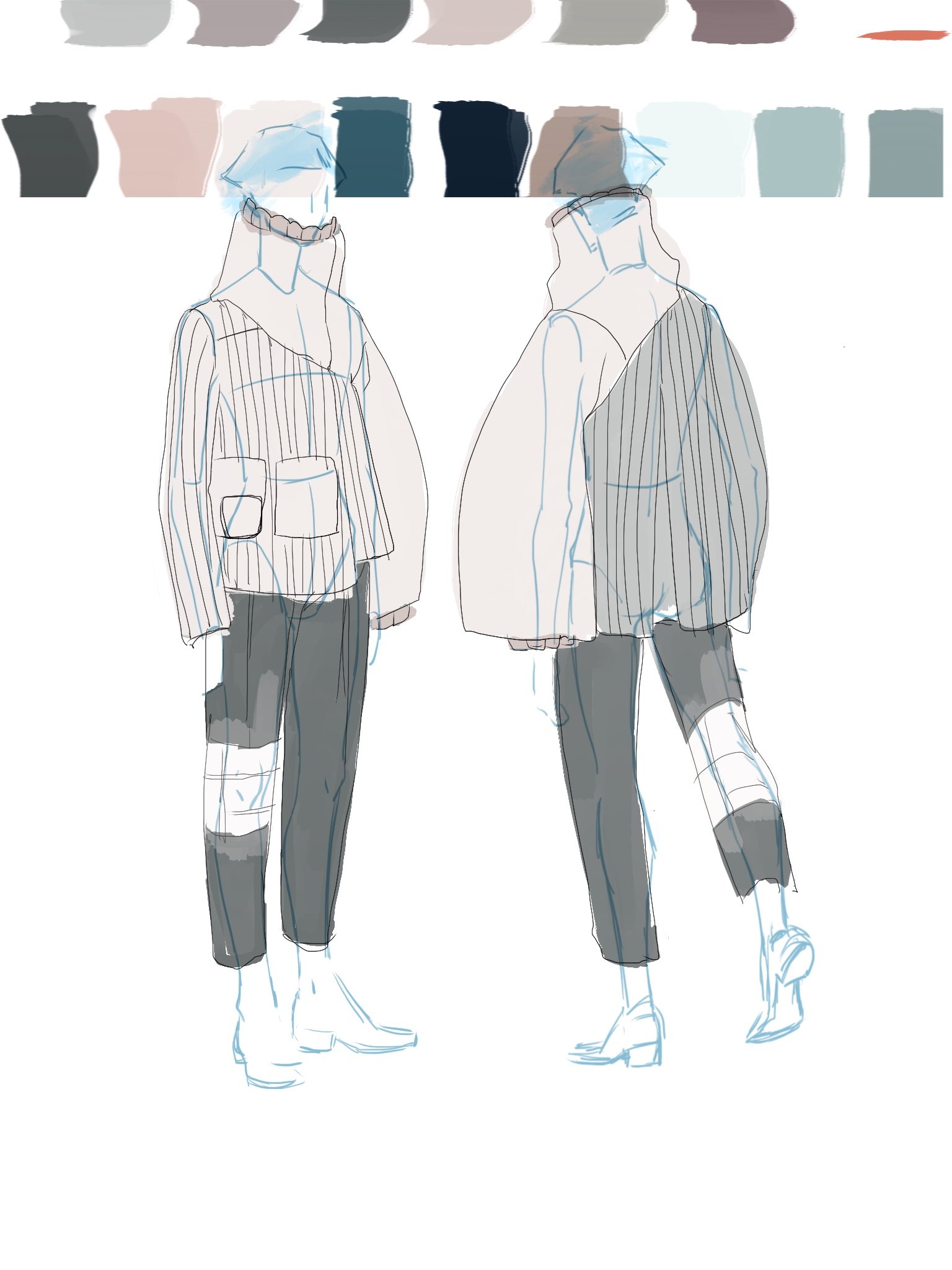
quilted jacket with cut-out pant

organza quilted bittermelon-inspired oversized jacket with reconstructed slip dress
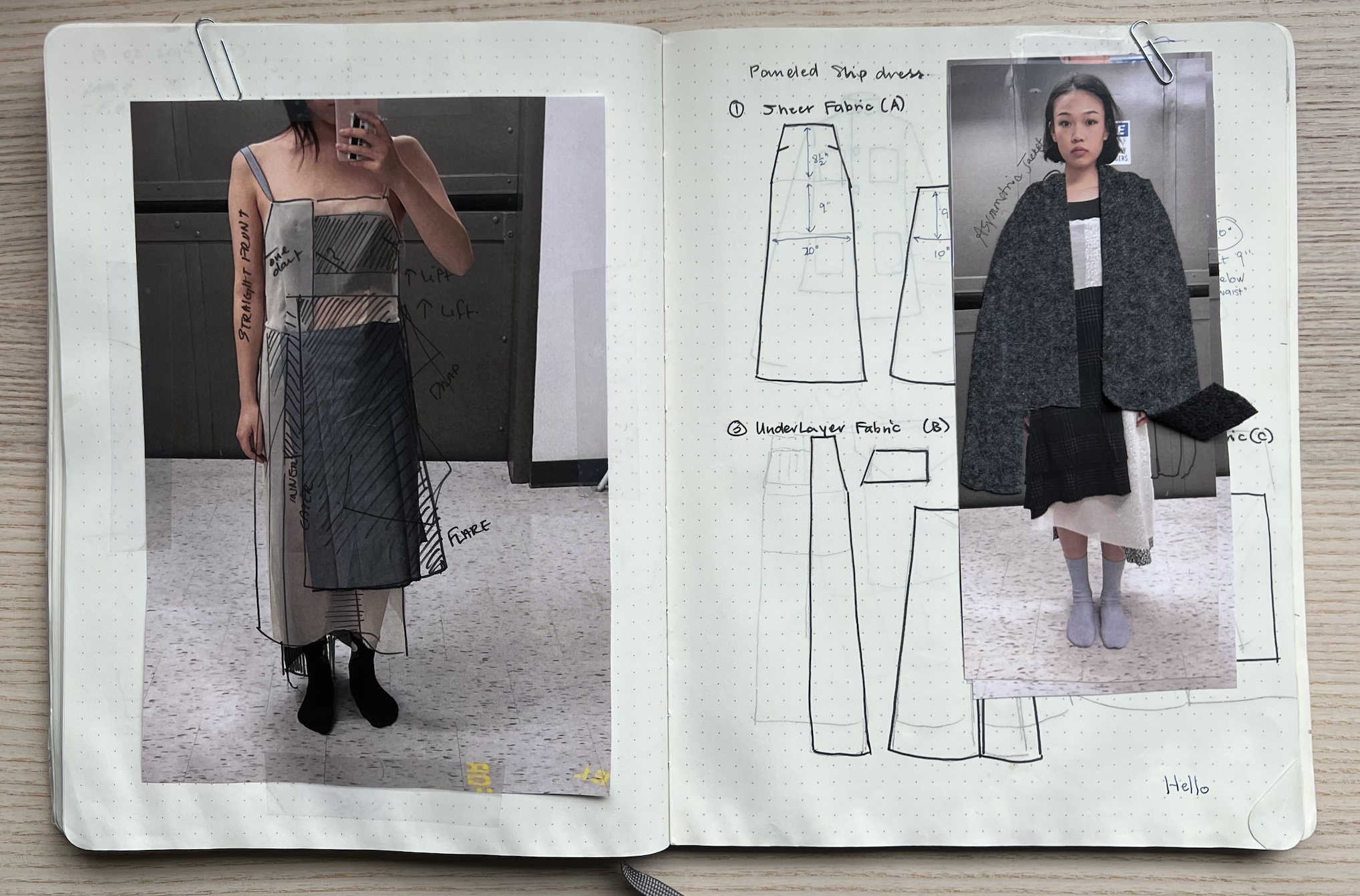
quilted jacket, deconstructed slip dress muslins
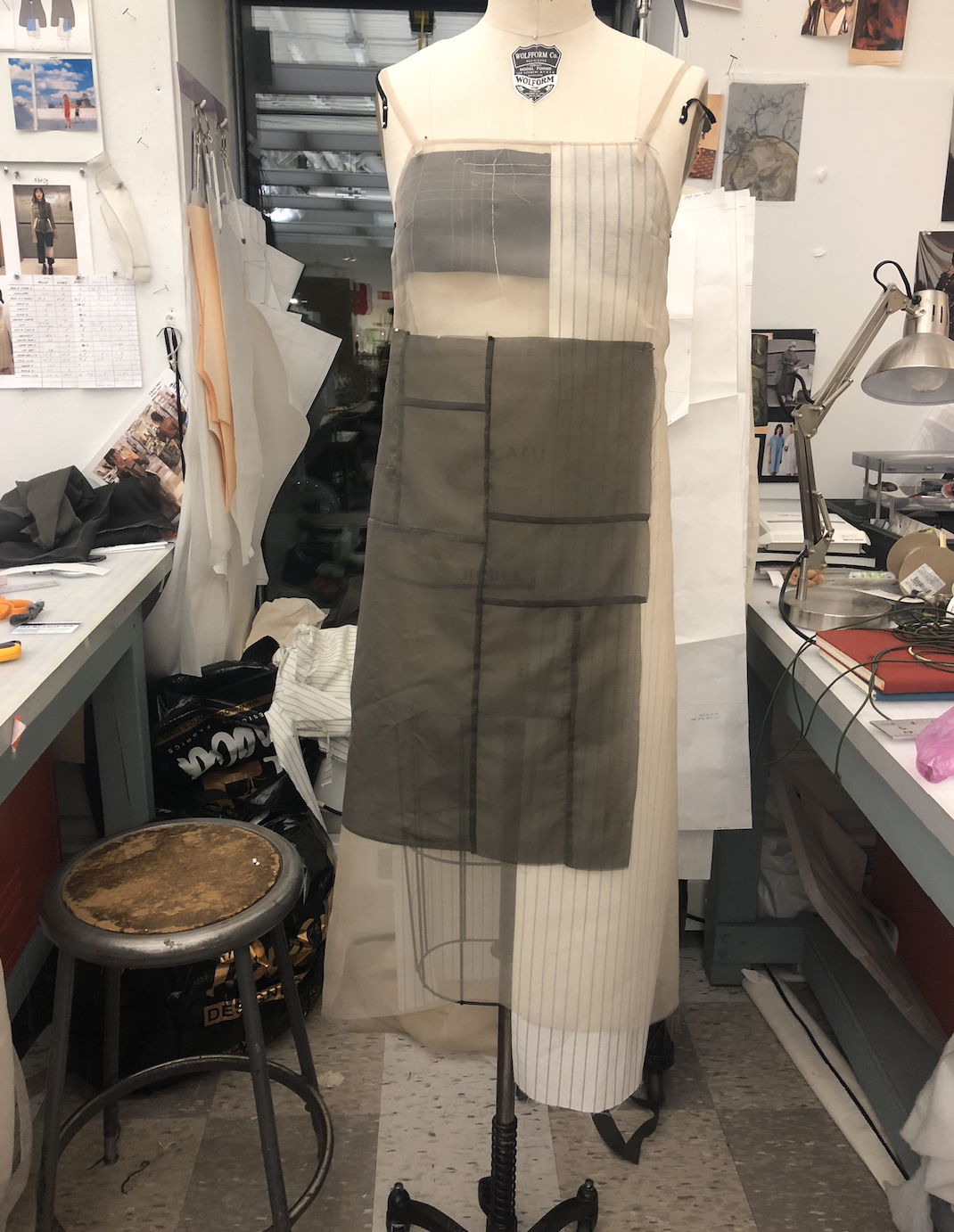
deconstructed slip dress final muslin
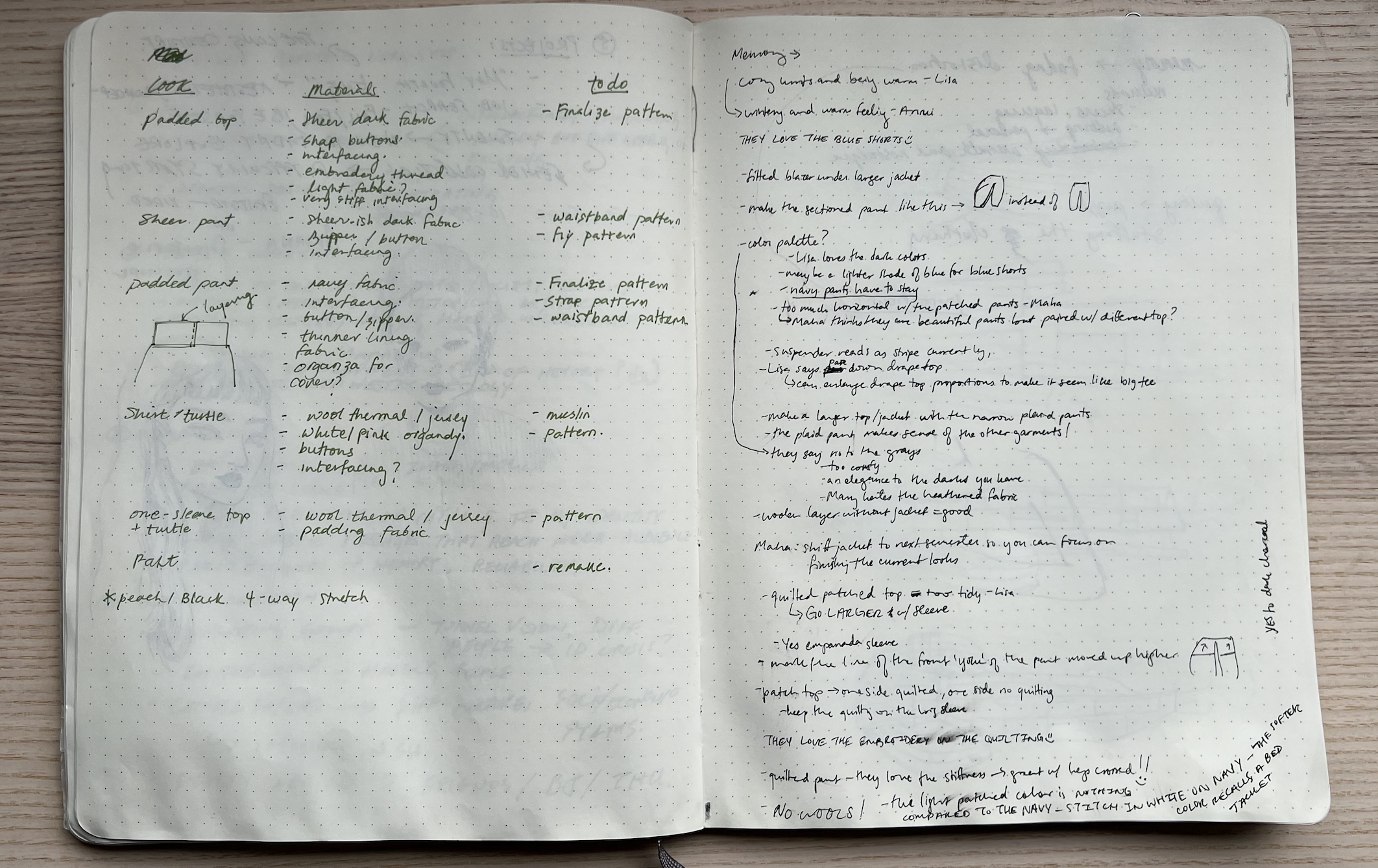
notes to self
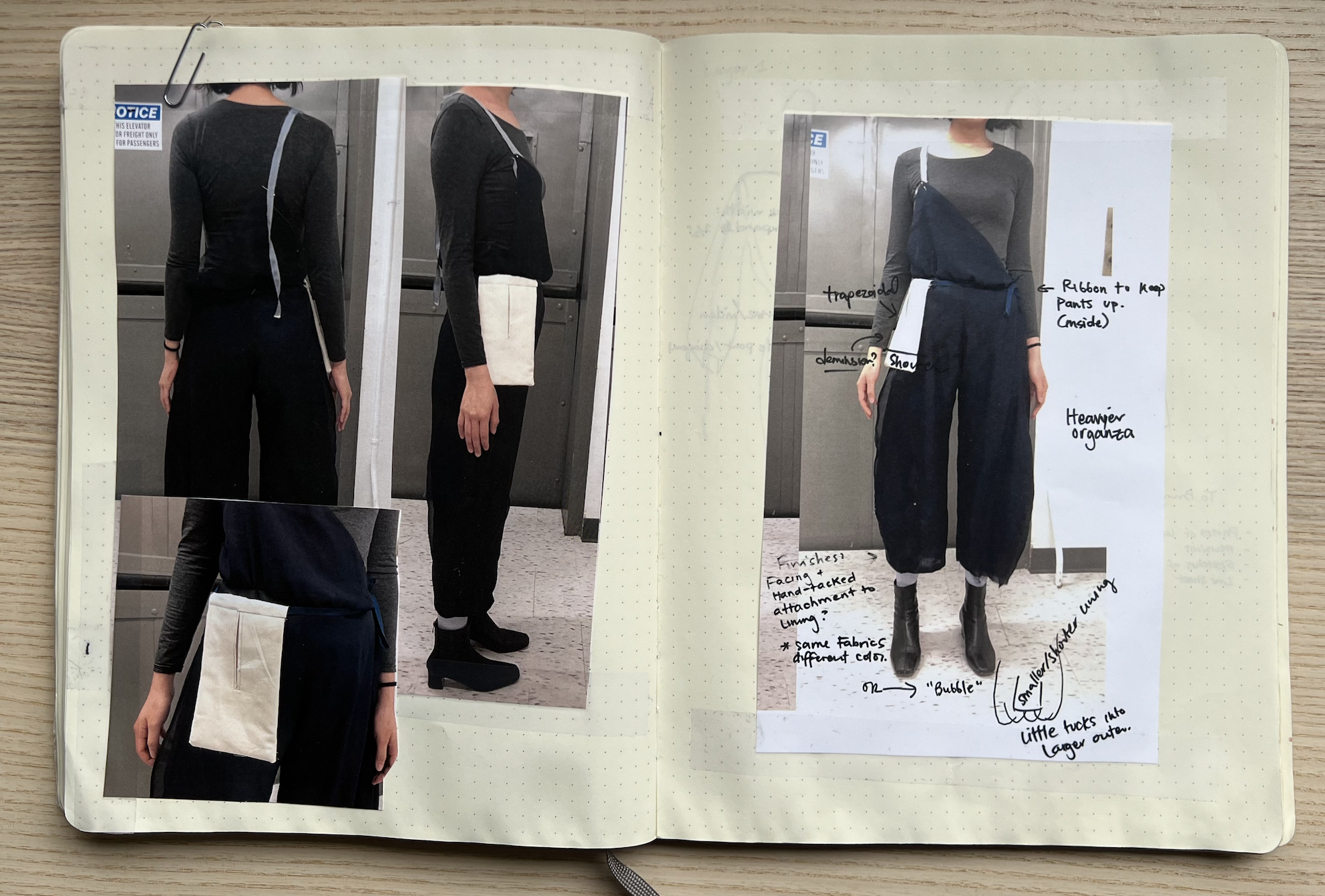
asymmetrical over-alls muslin
end product and delivery;
After months of contemplation, experimentation, and crafting, I completed a 6-look collection. The images below are from New York Fashion Week 2019, where by collection was shown as part of RISD’s senior show.
Transparency, blurriness, quilting, patchwork, and pops of bright color collectively represent various characteristics of memory. The mis-matched make-up represent distortions in our recollections.
